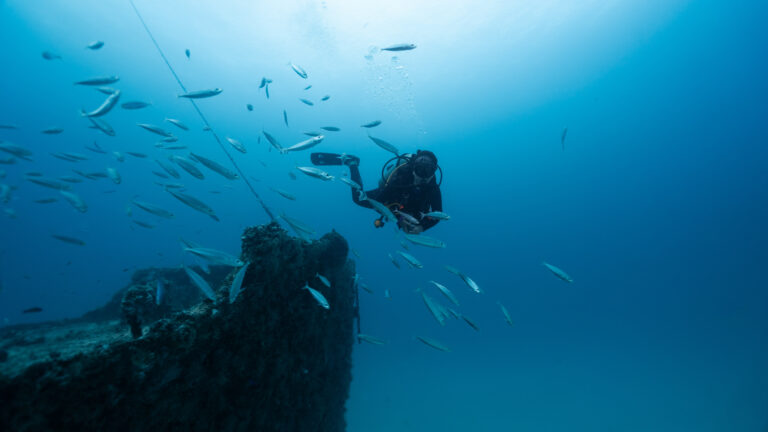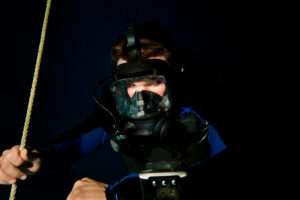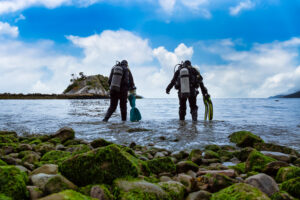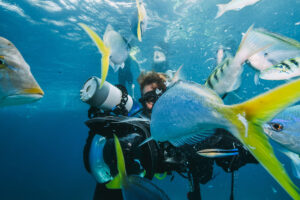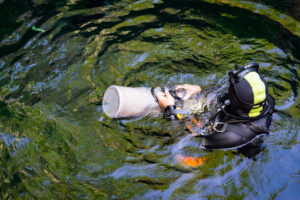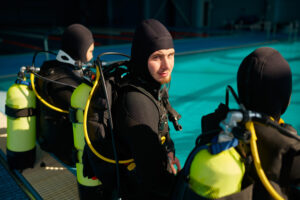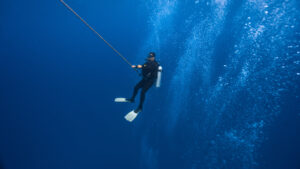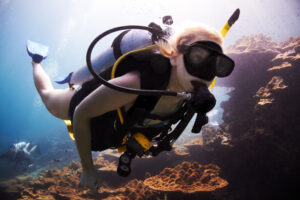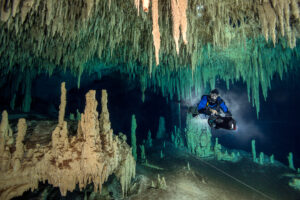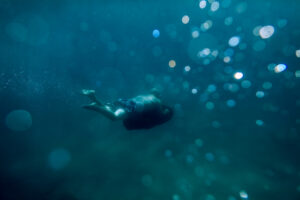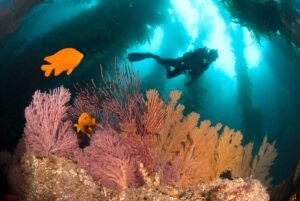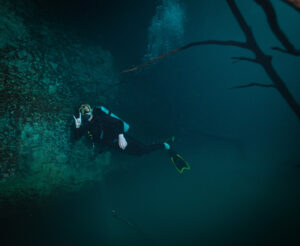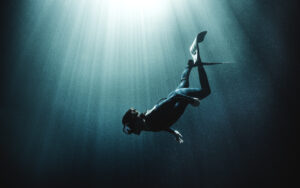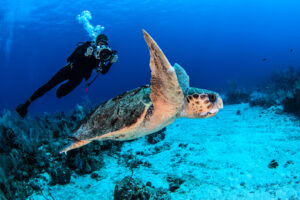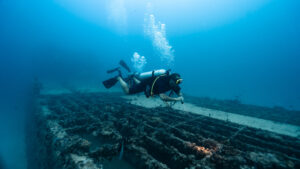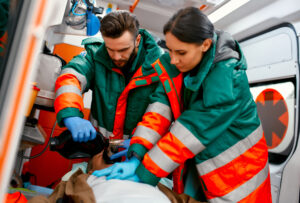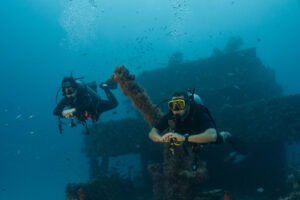What is a Reverse Profile?
Scuba diving has grown significantly in popularity over the past few decades, drawing adventurers to the underwater world to witness its beauty and mysteries. A crucial aspect of scuba diving is dive planning, which ensures the safety and enjoyment of the divers. Within this context, understanding dive profiles becomes essential. A dive profile is the plan that outlines the depth and duration of a diver’s underwater journey. Among these profiles, the concept of a “Reverse Profile” has sparked considerable discussion. A reverse profile refers to a sequence of dives where a deeper dive follows a shallower one within a short period. This practice has historically been avoided due to concerns about decompression sickness, but evolving research and guidelines have started to shed new light on its implications.
The Concept of Dive Profiles
Dive profiles are critical for managing the safety and effectiveness of diving activities. A dive profile generally describes the depths a diver reaches and the time spent at each depth during a dive. Common types include multi-level profiles, where divers gradually ascend to shallower depths, and square profiles, where divers stay at a consistent depth for most of the dive before ascending. These profiles help divers manage their nitrogen absorption, which is crucial for preventing decompression sickness. Decompression sickness, also known as “the bends,” occurs when nitrogen, absorbed by the body under pressure, forms bubbles as pressure decreases during ascent. Proper dive profiles help manage nitrogen levels and ensure safe ascents.
In traditional dive planning, profiles are designed to minimize nitrogen absorption and ensure gradual release. This is achieved by conducting deeper dives first, followed by progressively shallower dives. This approach allows divers to off-gas nitrogen more effectively. Reverse profiles, where a deeper dive follows a shallower one, have historically been avoided due to the belief that this sequence increases the risk of decompression sickness. The principle behind this caution is that residual nitrogen from the first dive may not be sufficiently released before undertaking a deeper dive, potentially leading to an increased risk of bubble formation.
Reverse Profile Explained
A reverse profile is defined as a sequence of dives where a deeper dive follows a shallower one within a relatively short interval, typically within the same day. In a conventional dive profile, the deeper dive comes first, allowing the diver to ascend to progressively shallower depths, giving the body time to safely off-gas absorbed nitrogen. In contrast, a reverse profile disrupts this sequence, potentially complicating nitrogen management.
The primary concern with reverse profiles lies in the body’s nitrogen absorption and release dynamics. When a diver ascends from a shallow dive, some nitrogen remains dissolved in the tissues and bloodstream. If a deeper dive is undertaken before this residual nitrogen has been adequately off-gassed, the increased pressure can cause the nitrogen to form bubbles, leading to decompression sickness. This potential risk has been the foundation of the traditional avoidance of reverse profiles in dive planning.
However, recent studies and evolving perspectives suggest that the risk associated with reverse profiles may not be as significant as once believed. Advances in dive computers and decompression models have provided more accurate tools for managing nitrogen levels, even in reverse profile scenarios. These tools can track a diver’s nitrogen load and provide real-time guidance on safe ascent rates and decompression stops, reducing the likelihood of decompression sickness. As a result, some diving organizations have begun to reconsider their guidelines on reverse profiles, although caution and careful planning remain paramount.
Physiological Impacts of Reverse Profiles
Understanding the physiological impacts of reverse profiles requires a deep dive into how the body absorbs and releases nitrogen under different pressures. When a diver descends, the increased pressure causes nitrogen from the breathing gas to dissolve into the tissues. The amount of nitrogen absorbed depends on the depth and duration of the dive. As the diver ascends, the pressure decreases, and nitrogen begins to diffuse out of the tissues and is expelled through the lungs.
In a standard dive profile, this process is managed by ascending gradually and conducting shallower dives after deeper ones. This sequence allows for controlled off-gassing, minimizing the risk of nitrogen bubbles forming in the bloodstream. In a reverse profile, however, the initial shallow dive might not provide sufficient time for complete nitrogen off-gassing before a deeper dive is undertaken. The deeper dive then increases pressure, causing the remaining nitrogen to stay dissolved or form bubbles, posing a risk of decompression sickness.
Decompression theory helps explain these dynamics. It revolves around the concepts of saturation and supersaturation of gases in body tissues. During a dive, tissues become saturated with nitrogen, and as the diver ascends, the goal is to avoid supersaturation, where nitrogen forms bubbles due to rapid pressure changes. Reverse profiles challenge this balance by introducing deeper pressures after shallower dives, complicating the body’s nitrogen management.
Furthermore, individual physiological differences, such as body composition and circulation efficiency, can influence how nitrogen is absorbed and released. Factors like hydration, fitness level, and previous diving experience also play a role. This variability underscores the importance of personalized dive planning and the cautious approach required when considering reverse profiles. Modern dive computers and algorithms can help manage these complexities by providing tailored guidance based on real-time data, but divers must remain vigilant and informed about their unique physiological responses.
Historical Perspective and Evolving Views
Historically, diving organizations and experts strongly advised against reverse profiles. The foundational guidelines, established in the mid-20th century, were based on empirical data and conservative assumptions about nitrogen absorption and decompression sickness risks. These guidelines emphasized conducting deeper dives first, followed by progressively shallower ones to ensure safe off-gassing.
Over the years, technological advancements and scientific research have prompted a reevaluation of these guidelines. Early decompression models were simplistic and lacked the precision of modern algorithms. As dive computers became more sophisticated, capable of tracking complex dive profiles and providing real-time decompression data, the understanding of nitrogen management improved. These advancements led to a gradual shift in perspective regarding reverse profiles.
Recent studies have challenged the traditional caution surrounding reverse profiles. Research conducted by diving medicine specialists and organizations has explored the actual incidence of decompression sickness in reverse profile scenarios. Some findings suggest that, with proper planning and the use of advanced dive computers, the risk may not be significantly higher than with conventional profiles. This evolving view is reflected in updated guidelines from some diving organizations, which now provide more nuanced recommendations rather than outright prohibitions of reverse profiles.
However, it is important to note that these updated guidelines still emphasize the importance of cautious and informed dive planning. While reverse profiles may be considered safe under certain conditions, they require meticulous attention to detail, including monitoring nitrogen levels, following appropriate ascent rates, and conducting necessary decompression stops. The broader acceptance of reverse profiles underscores the importance of using advanced technology and adhering to individualized dive plans tailored to each diver’s unique physiology and experience.
Practical Considerations and Safety Guidelines
For divers considering or inadvertently involved in reverse profiles, several practical considerations and safety guidelines are essential to ensure a safe diving experience. Major diving certification agencies, such as PADI and NAUI, have updated their recommendations to reflect current research while maintaining a focus on diver safety.
Firstly, divers should always use a reliable dive computer that tracks nitrogen levels and provides real-time guidance on safe ascent rates and decompression stops. Modern dive computers are equipped with advanced algorithms that can handle complex dive profiles, including reverse profiles, and offer personalized recommendations based on the diver’s specific conditions. Regularly updating the dive computer’s software ensures access to the latest safety features and guidelines.
Secondly, divers should plan their dives meticulously, taking into account their individual physiological factors, previous diving experience, and overall health. Pre-dive briefings should include a discussion of the dive profiles, with an emphasis on recognizing the potential risks associated with reverse profiles. Divers should also be familiar with the signs and symptoms of decompression sickness and be prepared to take immediate action if they suspect its onset.
Hydration and physical fitness play crucial roles in managing nitrogen absorption and off-gassing. Staying well-hydrated reduces the viscosity of blood, facilitating better nitrogen elimination. Regular exercise enhances cardiovascular efficiency, which can improve nitrogen management. Divers should also avoid alcohol and strenuous activities before and after diving, as these can adversely affect the body’s ability to process nitrogen.
In scenarios where reverse profiles are unavoidable, such as during guided diving excursions with fixed schedules, divers should communicate their concerns with the dive leader and seek personalized advice. Following conservative dive plans, extending surface intervals between dives, and conducting additional safety stops can help mitigate the risks. It is also advisable to use enriched air nitrox, which contains a higher percentage of oxygen and less nitrogen than regular air, reducing overall nitrogen absorption.
Ultimately, while reverse profiles are no longer outright prohibited, they require careful consideration and adherence to updated safety guidelines. Divers should stay informed about the latest research, use advanced technology to their advantage, and prioritize their health and safety in all dive planning activities.
Key Takeaways
The reverse profile in scuba diving, once strictly avoided, is now considered manageable with proper planning and technology. Understanding dive profiles, the physiological impacts of nitrogen absorption, and the historical context of diving guidelines is crucial for safe diving. Advances in dive computers and evolving research have provided new insights, allowing divers to safely undertake reverse profiles under certain conditions. Staying informed, using reliable dive computers, and following updated safety guidelines are essential practices for modern divers.

